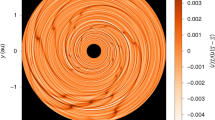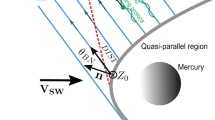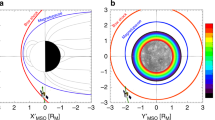Abstract
THE equality of the gravitational mass and the inertial mass for all kinds of matter and energy—the equivalence principle—was assumed to be a universally valid principle by Einstein in building his relativistic theory of gravitation. This equality has been experimentally verified with great accuracy for single neutrons1, for samples of various materials2 and for the planets3. Because Einstein's theory predicts the correct advance of the perihelion of Mercury, it is usually believed that the equivalence principle is therefore also confirmed for large bodies like the Sun, or the stars, for which no other experimental verifications are at present known. In fact, as will be shown, the astronomical observations cannot exclude a relatively large failure of the principle for the Sun. The hypothesis that such a failure may eventually explain the small non-Newtonian effects observed in the solar system will also be examined.
This is a preview of subscription content, access via your institution
Access options
Subscribe to this journal
Receive 51 print issues and online access
$199.00 per year
only $3.90 per issue
Buy this article
- Purchase on Springer Link
- Instant access to full article PDF
Prices may be subject to local taxes which are calculated during checkout
Similar content being viewed by others
References
Koester, L., Z. Phy., 198, 187 (1967).
Dicke, R. H., Ann. Phy., 26, 442 (1964).
Russell, H. N., Astrophys. J., 54, 334 (1921).
Harrison, J. C., J. Geophys. Res., 68, 1517 (1963).
Hughes, D. S., and Eckhart, C., Phys. Rev., 36, 694 (1930).
Shapiro, I. I., Astron. J., 72, 338 (1967).
Marsden, B. G., Astron. J., 72, 1170 (1967).
Nordtvedt, K., Phys. Rev. (in the press).
Author information
Authors and Affiliations
Rights and permissions
About this article
Cite this article
BRAMANTI, D. Perihelion Precession of Mercury. Nature 219, 47–48 (1968). https://doi.org/10.1038/219047a0
Received:
Issue Date:
DOI: https://doi.org/10.1038/219047a0
Comments
By submitting a comment you agree to abide by our Terms and Community Guidelines. If you find something abusive or that does not comply with our terms or guidelines please flag it as inappropriate.



